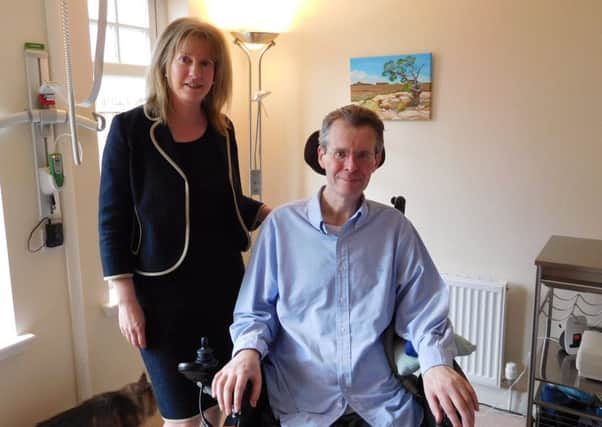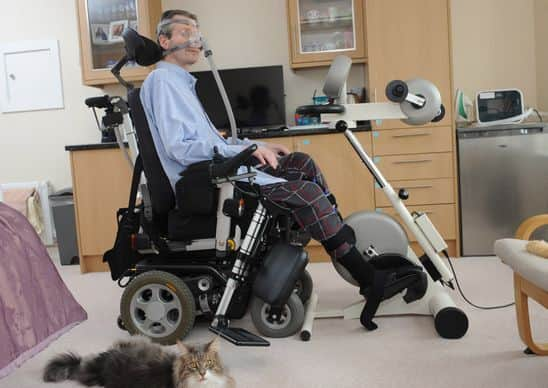Calum Ferguson: Living with a ventilator


FOLLOWING the sad news of Ronnie Corbett losing his life to Motor Neurone Disease (MND) his wife, Anne Hart, said “I would like people to know about the machine that kept him alive. It is called ResMed, a Ventilator which helps people to breathe. Without that we would have lost him much sooner.”
A Ventilator increases both the quality and the length of life for people with MND and those with related conditions.
Advertisement
Hide AdAdvertisement
Hide AdIt enables people with MND to breath, talk, eat and spend valuable time with their family and friends creating precious memories.


The Ventilator works by delivering air at a constant pressure to the patient through a lightweight non-invasive mask with the machine able to balance out the muscle weakness caused by MND. As the patients breathing muscles continue to deteriorate the settings can be increased to provide them with much needed air.
I was diagnosed with MND in March 2010. As a 46-year-old with three young children, this was a devastating piece of news, particularly giving the poor prognosis.
I have been using a Nippy 3+ Ventilator, similar to Ronnie Corbett’s, since November 2012.
Without this life preserving equipment I would not have survived to see Christmas 2012.


To assess the impact of ventilation on MND patient’s lives, there have been a number of research studies undertaken.
A research study published in 2004 by Newcastle University compared the use of non-invasive Ventilation (NIV) for patients who had all been diagnosed with MND for two years.
One group used NIV and the second group used only breathing exercises. The study showed that on average patients using NIV survived over 200 days whereas those using breathing exercises only survived 11 days.
Advertisement
Hide AdAdvertisement
Hide AdThe NICE MND guidelines for England and Wales which were published in February 2016 have used the results of this Newcastle University study and related studies to justify providing ventilators to MND patients. As well as the provision of a ventilator these guidelines stress the importance of supporting both the patient and their family in the use of this live preserving equipment.
This includes training in the use of the equipment, specialist nursing support, physiotherapy and additional equipment to maximise the benefit of the Ventilator.
Given the results of these studies, the use of NIV by MND patients has been increasing exponentially across the globe. In 2000 4% of MND patients across the UK were using a Ventilator this had increased to 13 per cent by 2009 and 28 per cent by the end of 2014. The equivalent data for just Scotland is not readily available but indications are Scotland is lagging behind the rest of the UK in the provision of this essential life preserving equipment.
This may well be one the key factors behind the average life expectancy of a Scottish MND sufferer being 14 months compared to over 20 months in the rest of the UK.
To improve the availability of Ventilators and appropriate levels of support for patients and their families it would make sense for NHS Scotland to adopt the new NICE MND guidelines.
Although Ventilators may not be appropriate for all MND sufferers they would help the majority, the key thing here is that patients should have the choice.
For more information on living with a Ventilator see the myNIV website - http://niv.mymnd.org.uk – which seeks to demystify many of the myths around ventilation.
Calum Ferguson is a MND campaigner. To support him text CALC51 £5 to 70070 or visit https://www.justgiving.com/Calum-Ferguson1